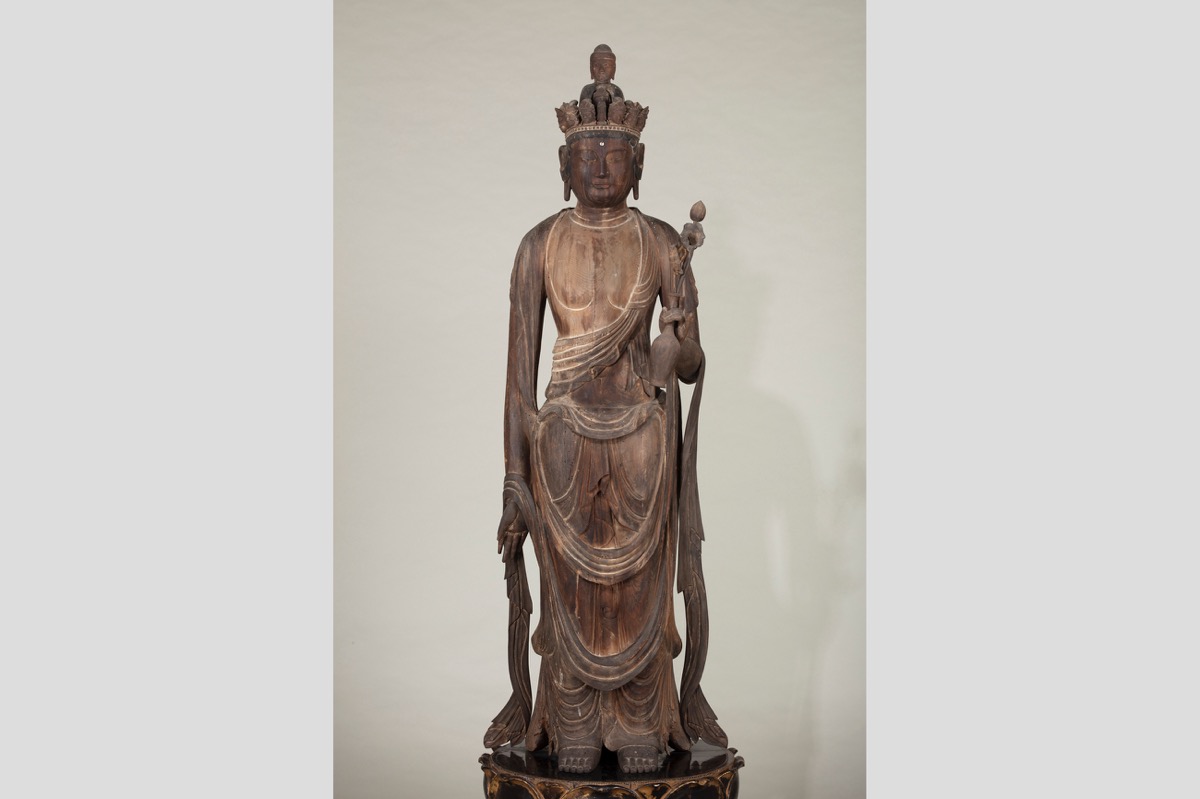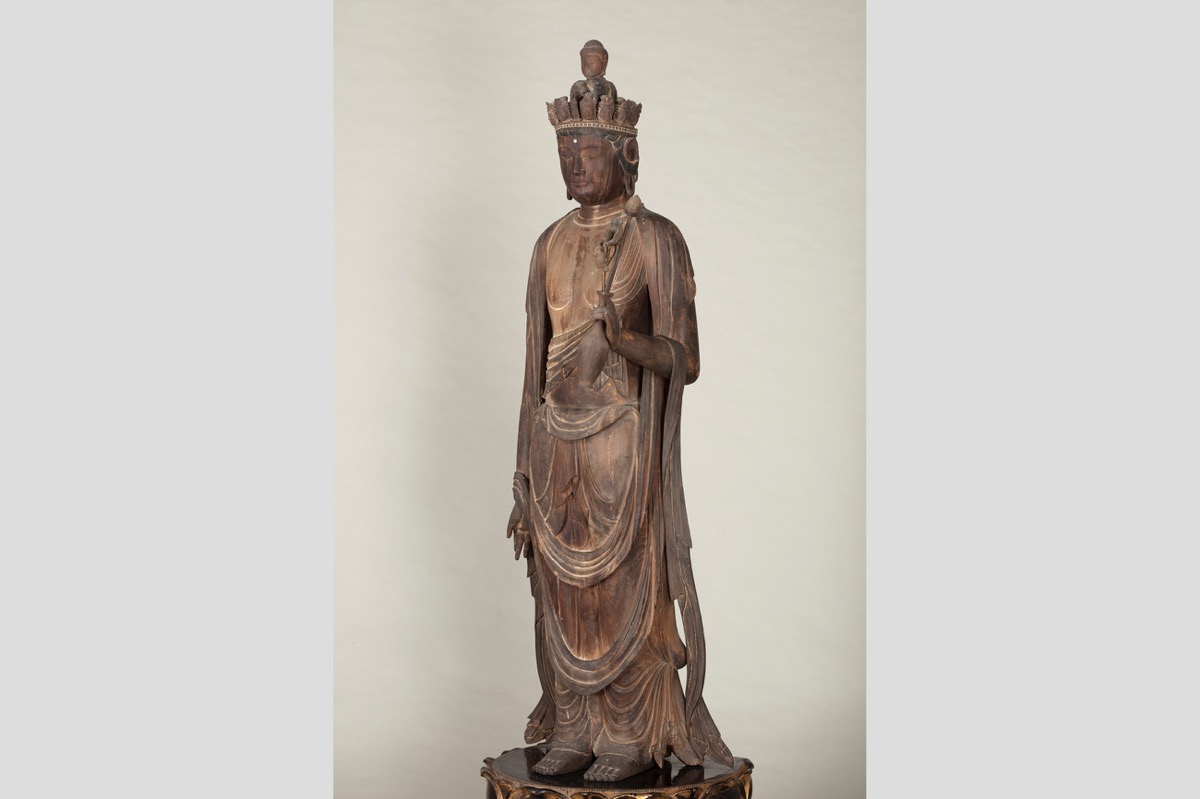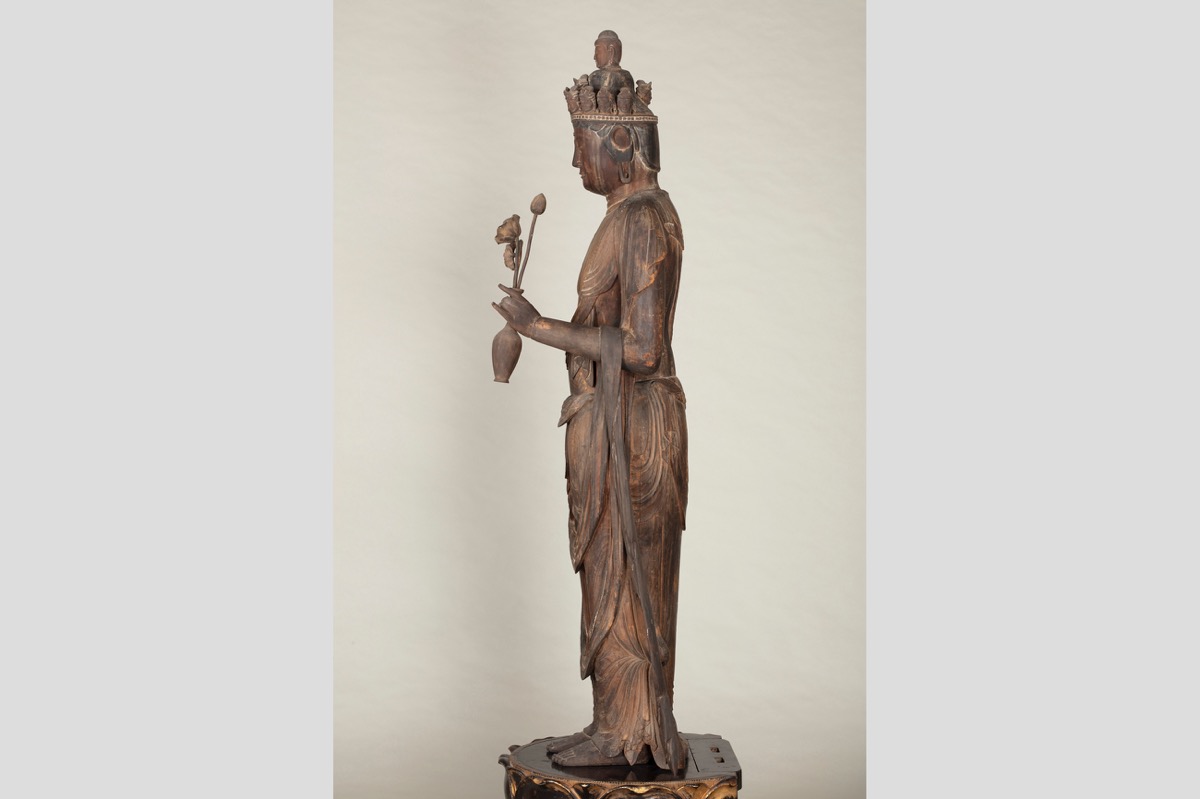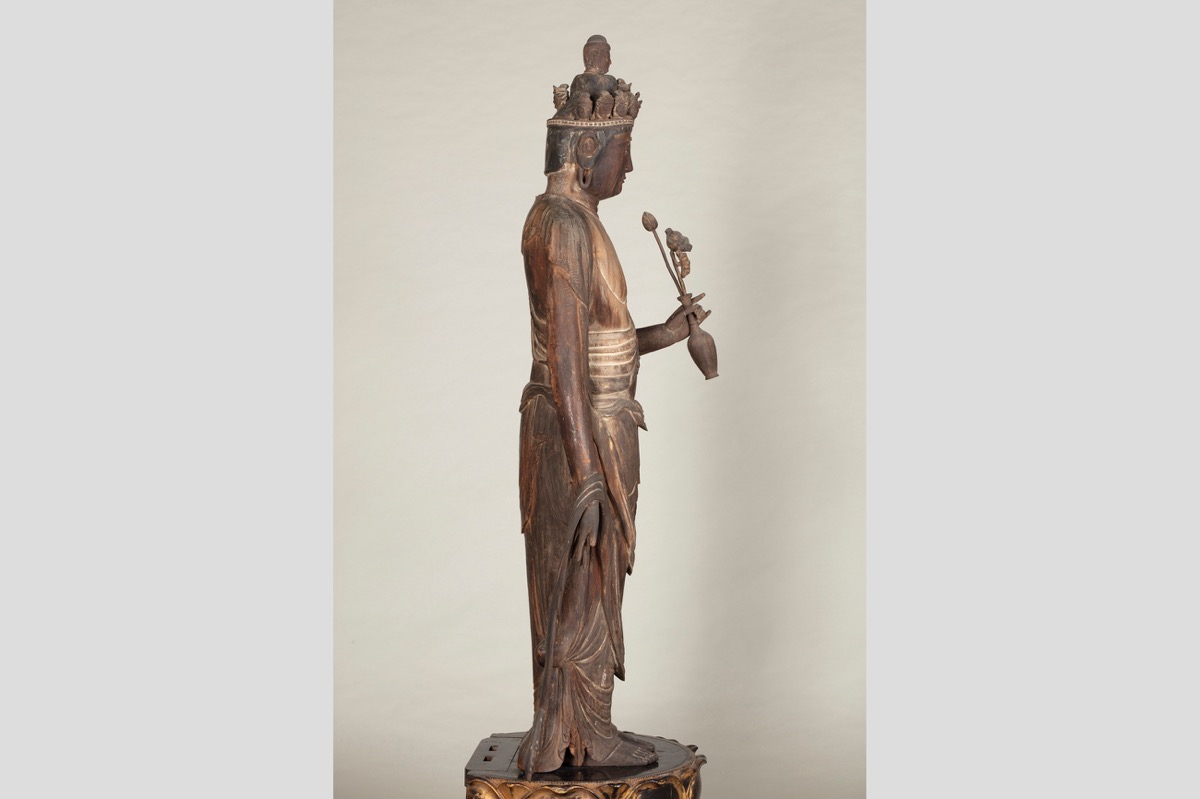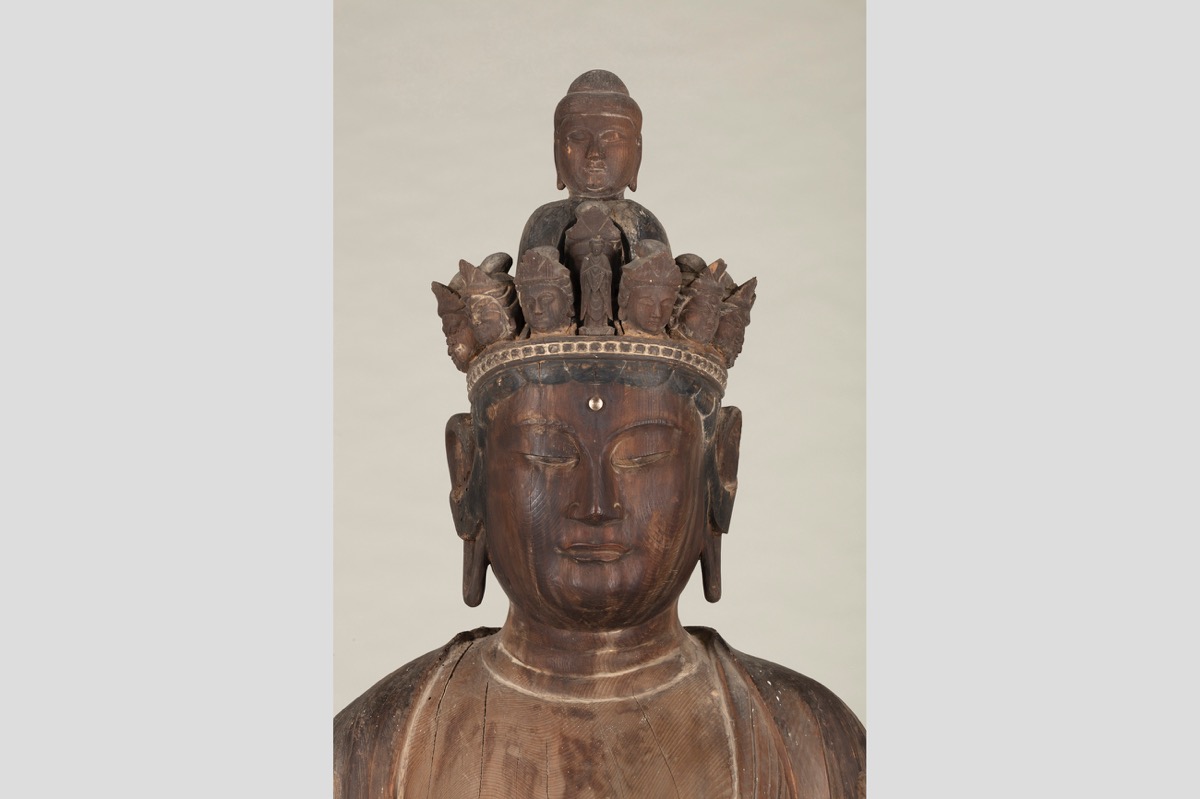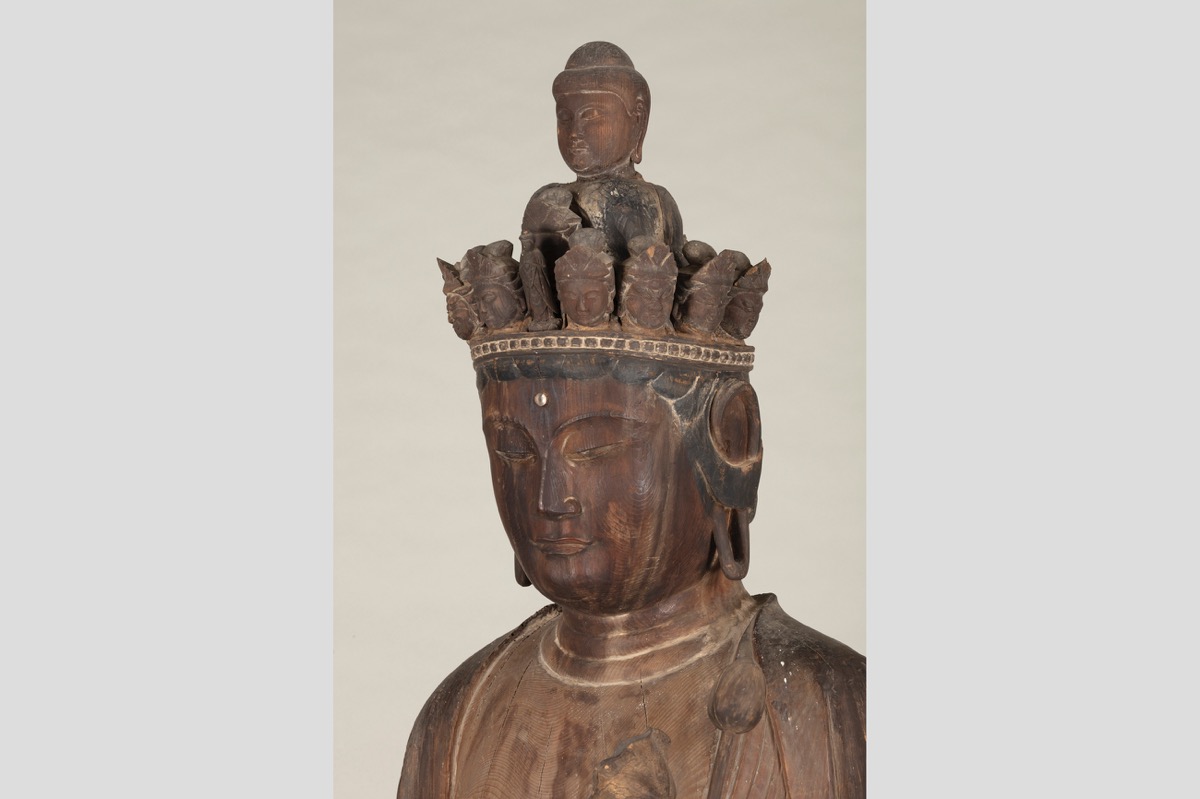Mokuzo Juichimen Kannon RyuzoStanding Statue of Eleven-Faced Kannon (wood)
| District | Arts and Crafts | Period | ー |
|---|---|---|---|
| Set Content/Set Date | Important Cultural Property(Sculpture)・西暦1955.02.02 | ||
| Owner | Dotokoku District | Location | 318 Takinomiya, Ayagawacho, Ayautagun, Kagawa (Ayagawa Municipal Lifelong Learning Center) |
In Buddhist teachings, the Bodhisattva Kannon transforms into all kinds of shapes in order to save living beings. This Eleven-Faced Kannon is one of them. The eleven faces on the head all have different expressions.
A single piece of Japanese nutmeg is used for the main part of this statue, from the hair atop the head all the way to the pegs at the feet (used like sandal thongs to fasten the statue to its base). The interior is not hollowed out, and there is a support rod in the right shoulder.
The pattern of the clothes (folds) shows the “swirl pattern” (kamon) and “ripple pattern” (honpashiki emon, represented by large and small alternating waves) from the early Heian Period (Heian Period: 794-1185). However, the symmetrical body and somewhat extravagant, developed patterns of the cloth suggest that it was made during the mid-Heian Period.
Originally, it served as the principal image of worship at Ryutoin Hall of Ayagawaji Temple, a temple attached to Takinomiyajinja Shrine in the town of Ayagawa. When the temple was closed due to the policy of separation of Buddhism and Shintoism in the Meiji Period (1868-1912), it was enshrined by the people of the Dotokoku District. It is currently on display at the Ayagawa Municipal Lifelong Learning Center.
Legend says that it was made by Sugawara no Michizane, who served as provincial governor of Sanuki from 886 to 890 and was later deified. This means the statue has deep ties with the the worship of Michizane, or Tenjin.
*After finishing his duties in Sanuki, Sugawara no Michizane returned to the capital and rose to the rank of Minister of the Right (udaijin), but his career was later destroyed in political struggles. He died in Dazaifu (currently in Fukuoka Prefecture) in 903.

